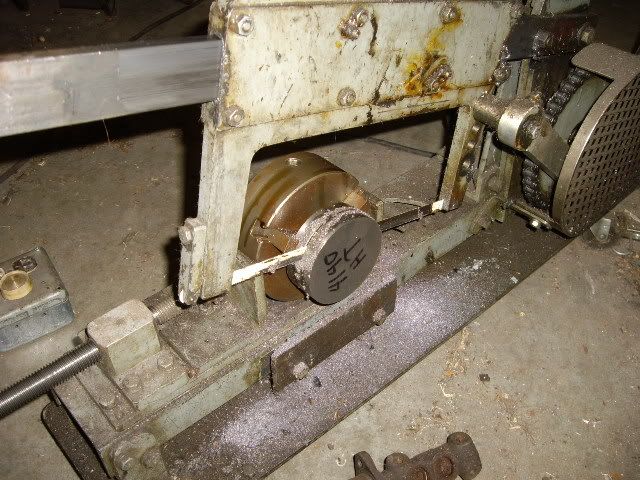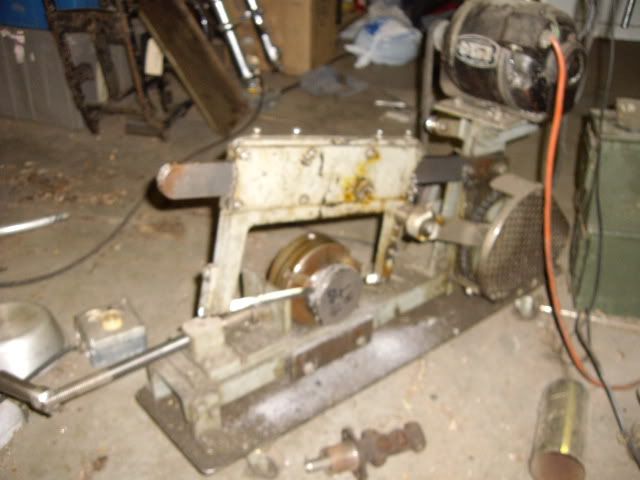Hi Tinkerer, I've got a home made power hack saw I inherited from someone who built it out of left over blocks and chunks of angle and plate and it works great, but it's a bit heavy and unwieldly compared to what you're getting into. I've got a couple of gear motors that are right angle, and put out 60 rpm, which is about right, they came out of various office equipment, if you're anywhere close to North Carolina, I could send you one. When I got the saw, it appeared to work fine, but took forever to cut. It has a belt drive primary reduction, with a jack shaft, and then about a forty one chain drive secondary reduction, with a connecting rod attached to the secondary sproket, about six inches in diameter or so.

the connecting rod is set up for about a five inch stroke, and it cuts on the pull stroke

The man who made this had it running the wrong direction, so the angle of the con rod was tending to lift the blade during the cut stroke, and pull down during the return. I ended up reversing the motor, and changing the bearing point on the saw end of the con rod, and now the angle of the rod lifts the blade slightly in the cut on the outward, non-cutting stroke, and pulls slightly down on the pull stroke that cuts, and it cuts pretty fast on steel my band saw ruins blades on.
For that saw you got, you will probably have to build a sub-frame, to carry the motor assembly, which is why I suggested the right angle motor for size, and you'll have to calculate the angles of blade during the cutting action, so you can set up your drive and pivot points to allow the natural motion of the arms to give you pressure in cutting, and relief in the return. Those are the primary considerations, and you might consider putting the motor on the far end of the saw, so it cuts on the pull stroke, to ease the setting up of natural forces to do your cutting pressure and relief in the return.
I could get along without mine, but it's saved maybe a couple hundred hours of hacksawing in its twelve or fifteen years in my custody. It's likely to last another fifty years after I go, as it did after the previous owner. He had it at least that long and used it all the time, even with the angles and stroke wrong, it still cut, just slower. I just hope I make it to 91, which is how old he was when he finally passed on to that main machine shop in the heavens. He was a good mechanic, and a wealthy man, when it came to good stories, good work, and good cheer, I remember him every time I see his old saw. Here's to Joe Barbour and the many things he left behind as monuments of his work.

mad jack